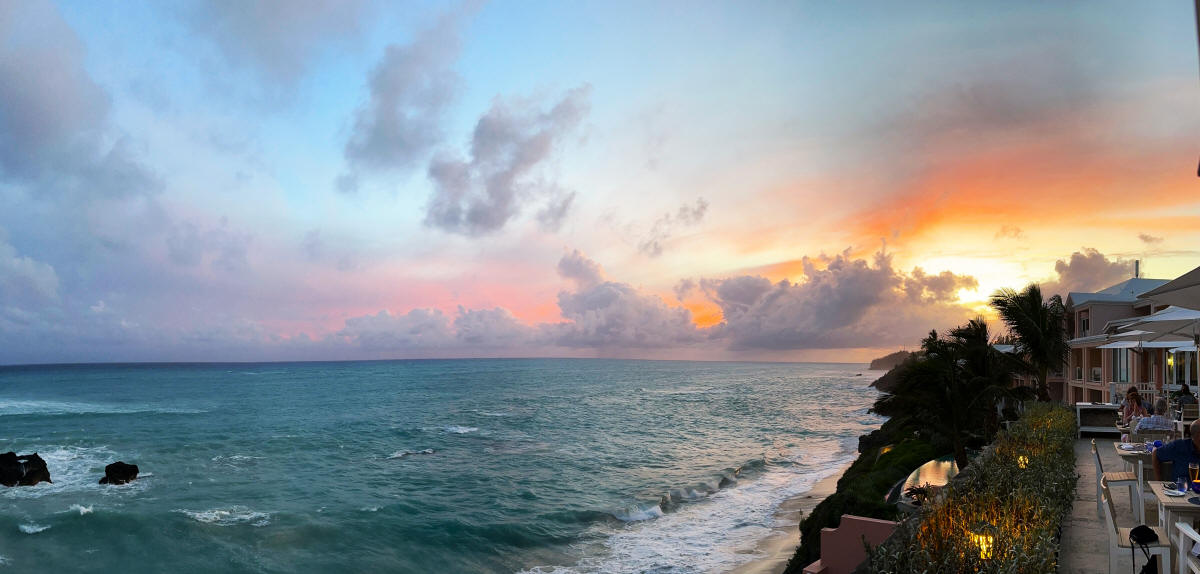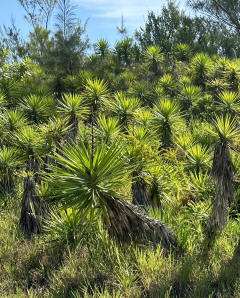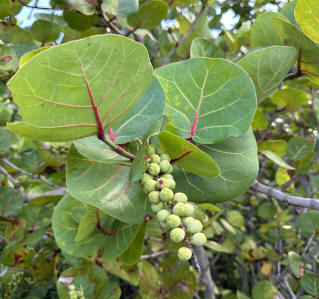
If you’re going to go to Bermuda, pick the week a hurricane is
supposed to hit, because the island was awesomely empty of tourists (and
cruise ships). The vacation was supposed to be a weeklong combo
snorkeling/exploration trip (Alison having decided she liked snorkeling
while we were in the Galapagos), but it turned into a five day
failed-snorkeling/but-still-exploration trip due to the hurricane (we had to “flee
Lee” and, even days before it hit, the waves were choppy enough to make
snorkeling off the shore untenable).
Bermuda was a breath of fresh ocean air compared to the various Caribbean islands we’ve been to. Just as picturesque as Aruba, just as lush as Jamaica, no indication of the grinding poverty of the Bahamas. Plus more concrete historical sites (or perhaps, more limestone than concrete, in the form of the 90 or so forts that litter the entire island; funny story about that forthcoming). Just as welcome was the welcome; you never felt like the “necessary evil” of tourists that permeates the poorer Caribbean brethren. Homes were upscale, there were no shanty towns, public services were clean and efficient, people seemed well to do and happy to have you there.
We stayed at a Air BnB (VRBO, actually, as we’ve had better luck
with them) run by a local art teacher named Lisa. She and her
husband were generally awesome, as was the small house we rented from
them, which was perfect for what we wanted. Part of that was the
sturdy wood construction and Lisa’s artwork, which adorned many of the
walls (and some of which we bought), all of which made it much more
personal that a generic hotel room.
 |
Day 1
The Jet Blue flight was delayed by three hours, making watching the
sunrise from the airport a little less satisfying than it would have
been if we actually needed to be there early enough to see it. But
a short two and a half hour flight later, Bermuda came in sight and
that's all we needed.

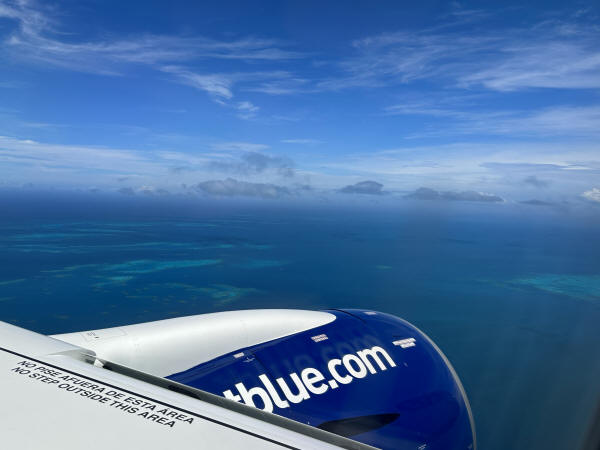 |
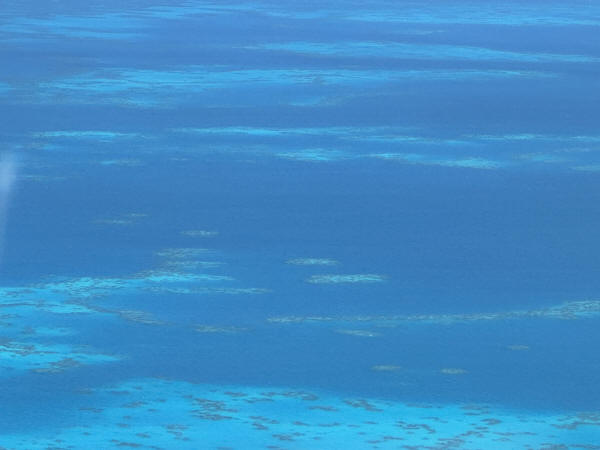 |
Due to the delay, our original plan of arriving, settling in, and snorkeling in the
afternoon turned into dinner at Gibb’s Hill lighthouse (which has a
restaurant in the base building), then circling the local area on foot. Turns out Bermuda is really not pedestrian friendly, which we both found
surprising. As we dodged cars driving on the wrong side of the road.
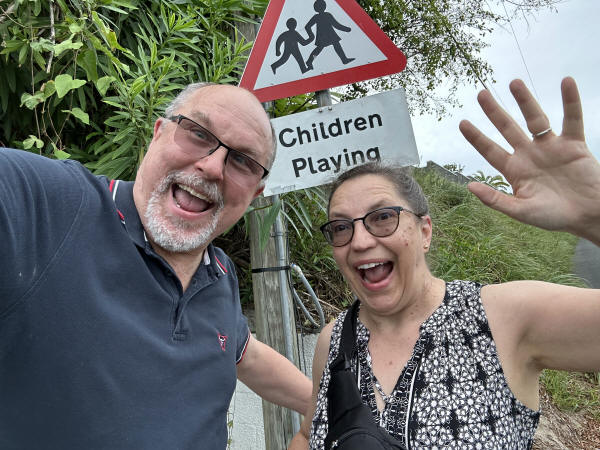 |
 |
 |
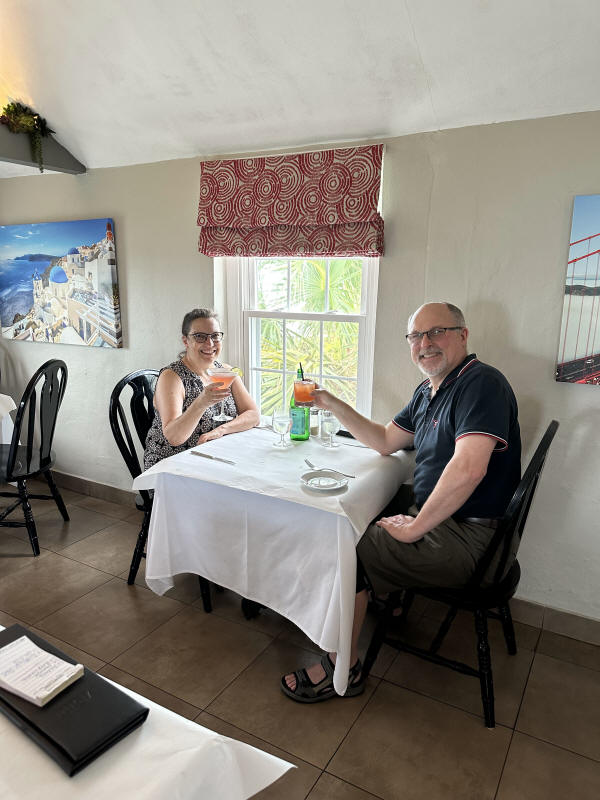 |
Day 2
Day two was the Royal Naval Dockyards and the National Museum of
Bermuda (which is oddly named as Bermuda, an internally self-governing
British overseas territory, is not a nation). Equally odd, the Museum
is in "The Keep," which is a largest fort in Bermuda, but unlike every
other fort, is not called a fort. As it turned out, the boundaries
between the three were not completely clear, but there was a lot to see
between The Keep, the Museum, the port, and the shops. Plus we had
lunch at the Frog and Onion, a pub started by a Frenchman and a Bermudan
(hence the name).
The National Museum was in the Commissioner's
House, and as we found out, the Commissioner's House is made out an
extremely hard form of limestone (we didn't know there were different
hardnesses). It housed an extensive collection of artifacts, with
a lot of descriptive posters to give you context, which made them much
more interesting. Most of it centered around slavery; Bermuda,
like Australia, was a dumping ground for criminals and malcontents, but
it also imported slaves (either directly, or through raids on Spanish
colonies).
A couple of interesting facts that came out of that.
One, Bermuda had no indigenous population. It was the home of a
number of Spanish shipwreck survivors in the 1500s, but wasn't
permanently settled until 1609 by a British company (the Virginia
company, who was trying to make a go of that pesky American continent).
Second was that for all it's turquoise waters, reefs, and small islands,
it was never the home of pirates, only privateers (who are government
sponsored pirates, in this case English ships that would sack Spanish
Galleons and colonies in South America).
Nothing goes
together like glassblowing and rum cake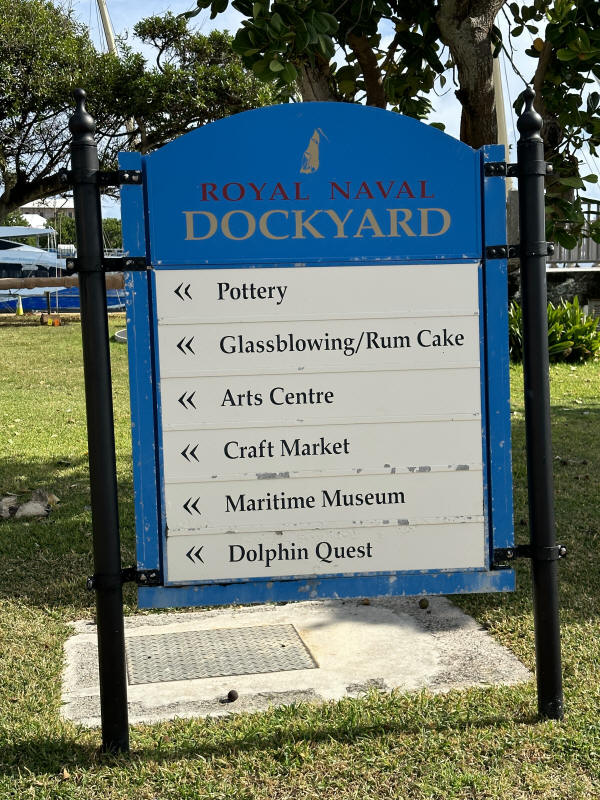 |
The National
Museum for the non-Nation |
Commissioner’s
House 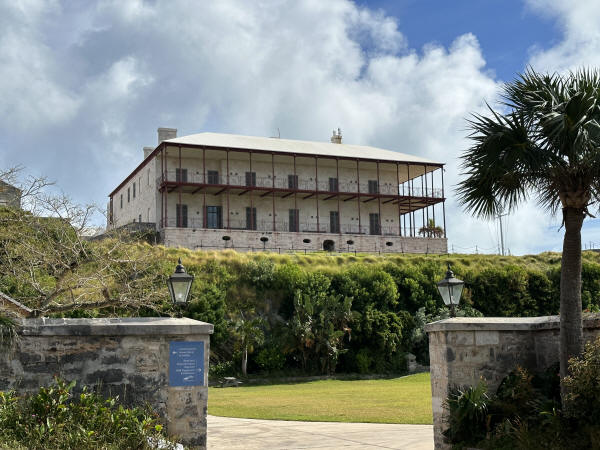 |
Us at the
commissioner's house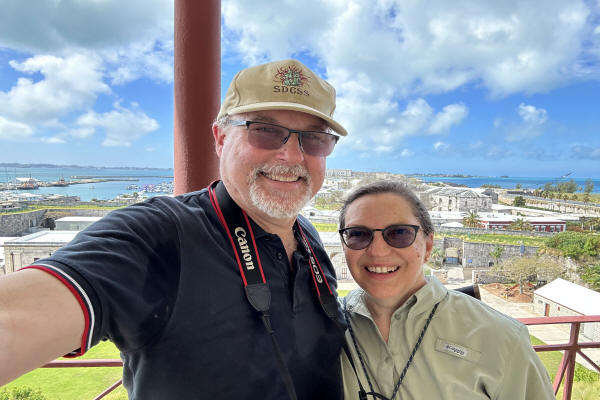 |
So, this was interesting; this is a lamp corridor where
kerosene lamps could be placed in windows to light gunpowder and
shell storage spaces through small windows, eliminating the
possibility of a spark setting off the gunpowder. |
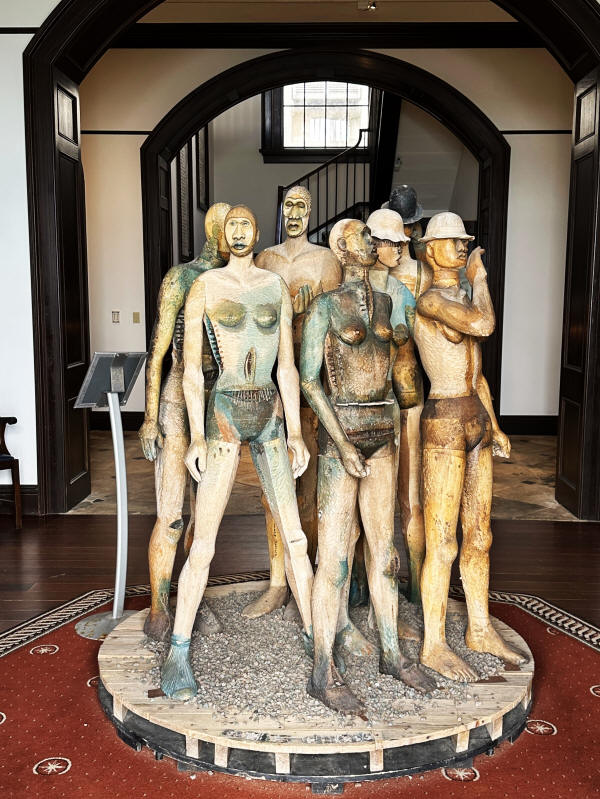 |
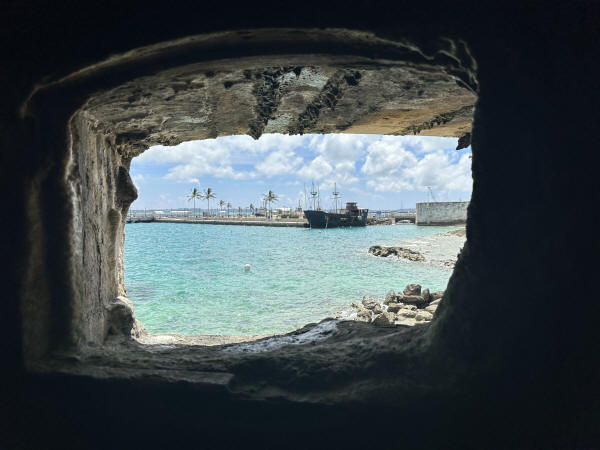 |
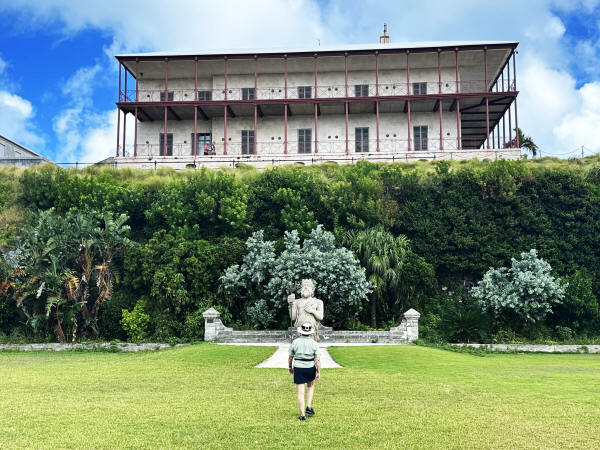 |
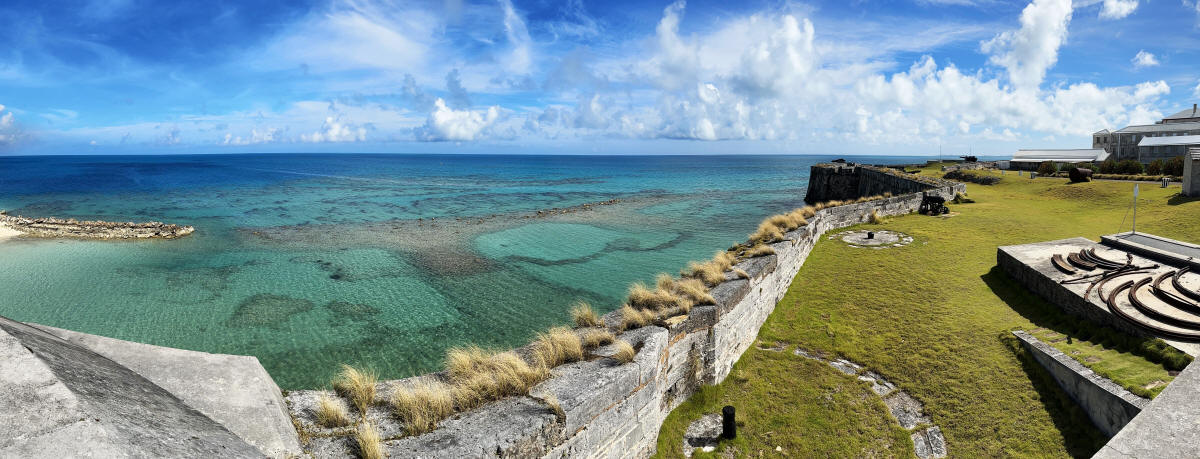
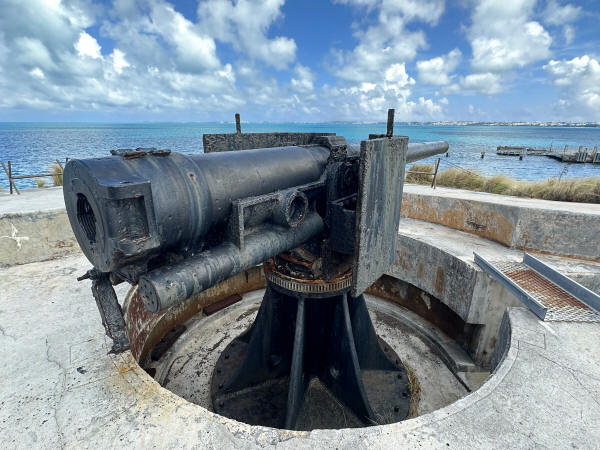 |
 |
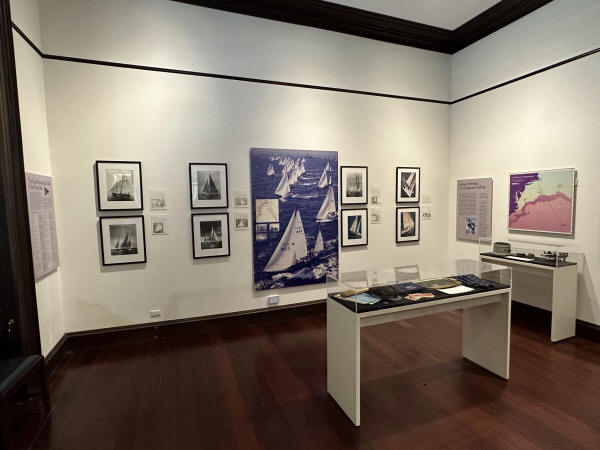 |
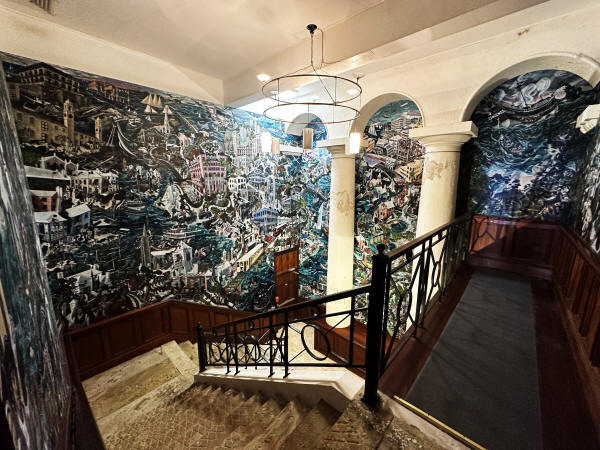 |
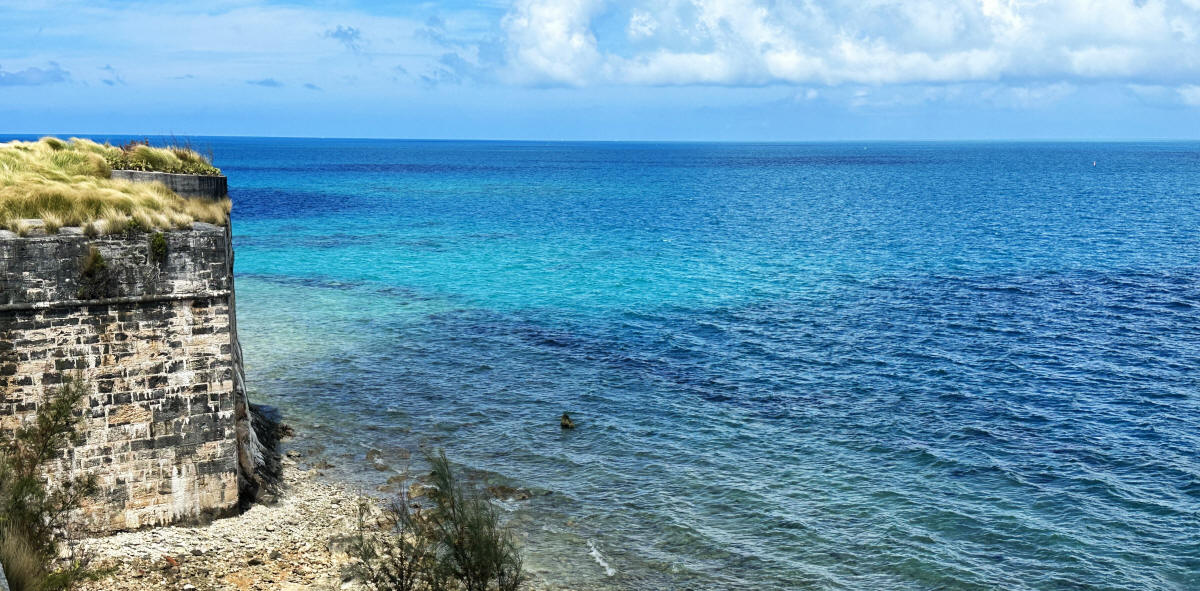
We did most of our travelling around the island by bus.
There is a uber like app on Bermuda, but it only works if you have a
Bermuda phone number. The Taxis were expensive, the electrical
vehicles (you can't rent a regular car in Bermuda) were ridiculously
expensive, and the buses were fairly efficient. First couple of
days it seemed great, with maybe five or ten minute waits. Then
there was one day where we waited more than half an hour and had two
buses that were leapfrogging each other show up at the same time.
Seems like they really need a real time tracking app for the buses.
But everywhere you went, there was just awesome scenery outside the
window.
We ended up taking the wrong bus back from the
Royal Dockyard, route 8 instead of route 7, which put us on the wrong
side of the island from where we were staying. Given the island at
that point is less than half a mile wide, not much of a problem.
But it turned out to be fun, because during that roughly quarter mile
walk we went from sun and bright blue skies to pouring rain.
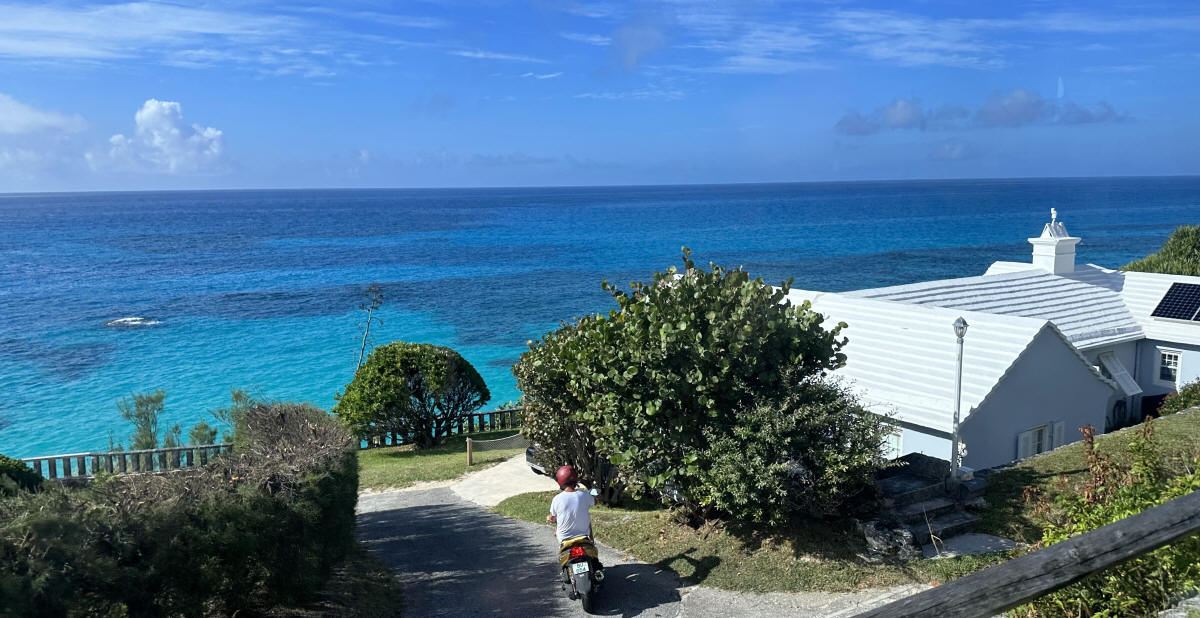
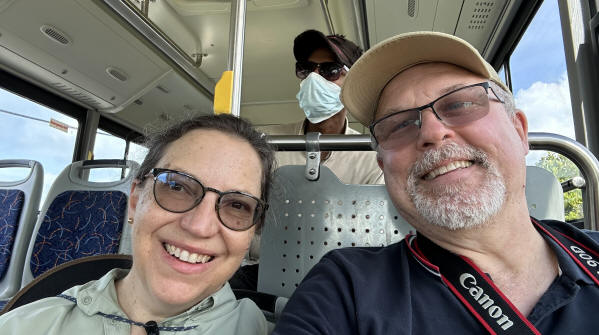 |
Day 3
Day 3 started with an attempt to
snorkel. The house we rented was within walking distance of Church
Bay, which was supposed to be the second best snorkeling spot on the
island (we walked by the best spot on Day 5, Tobacco Bay, and it turned
out to be a party beach, so I'd go with "the best" instead of second
best). We did the 13 minute hike, and there was the bay, spread
out beneath us. The water was blue, the beach was pinkish, the sun
was shining, and the waves were waving. Waving rather strenuously,
as it turned out, because of the still very distance hurricane Lee.

Alison didn't feel comfortable with the four to six foot waves,
but I was steadfast in my desire to try out the new GoPro 10 I bought
explicitly for Bermuda. "You hang on, I'll swim out and see if
it's safe, back in fifteen minutes," I said. Rushed to the beach,
into the water, onto hard coral just a few feet off the shore; not
jagged, old coral lumps, but big enough to trip you up. So I'm
trying to feel my way through it while the waves are pounding into me
and hang on to the flippers and GoPro, and I finally just half-walk,
half swim out far enough to lie flat in the water, and realize in the
rush I forgot the snorkel.
I'm not going back in, so I
swam out anyway, towards the small reef you can see maybe 50 yards off
the shore. But the waves were stirring up the sand so much that
visibility was almost nonexistent. So I swam back, took a wave in
the back that sent me stumbling over coral and rocks, and cut myself up
a bit.
But the GoPro worked like a champ and even got a few
decent pictures besides the murk.
|
|
|
| Look, ma, no
snorkel! |
Yes, that's
just sunlit water ... still pretty |
Alison found a secluded area and finally went in the
water (with the little fishies caught by the GoPro above); we found some
weird critters stuck to the rocks, and then we headed back to shower.

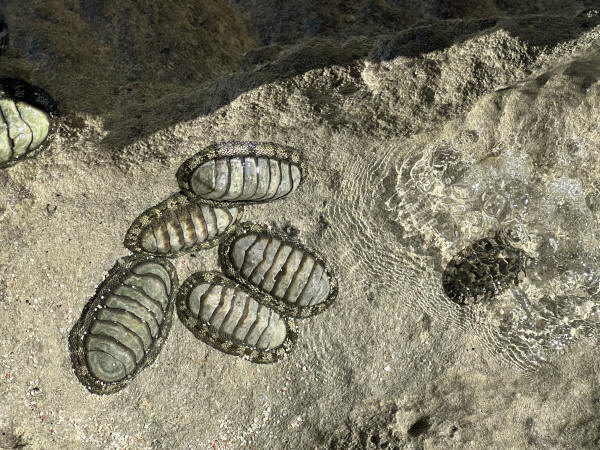 |
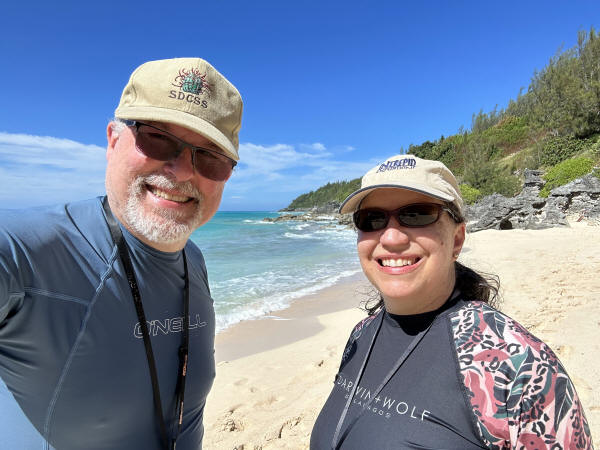 |
That was in preparation for a trip to the Fantasy and Crystal Caves,
limestone caves discovered in 1905 (three hundred years after the Island
was settled!). They were fab, with crystal clear water that, as it
turned out, was salt water. The level rises and falls with the
tides, and there are times when the fantasy cave is inaccessible!
We did the Fantasy Caves first.
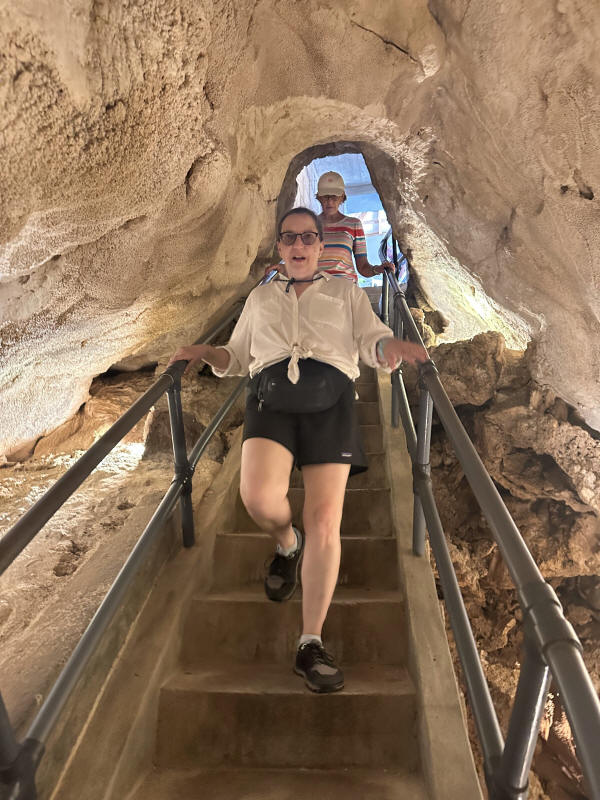 |
|
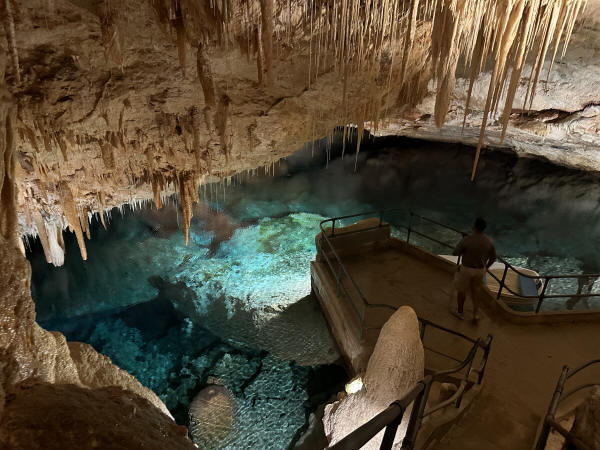 |
 |
 |
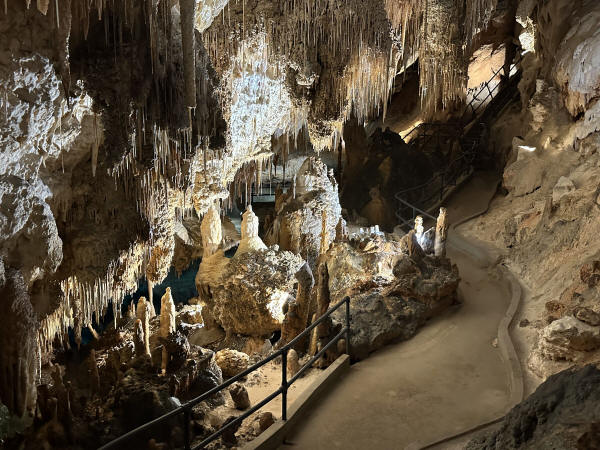 |
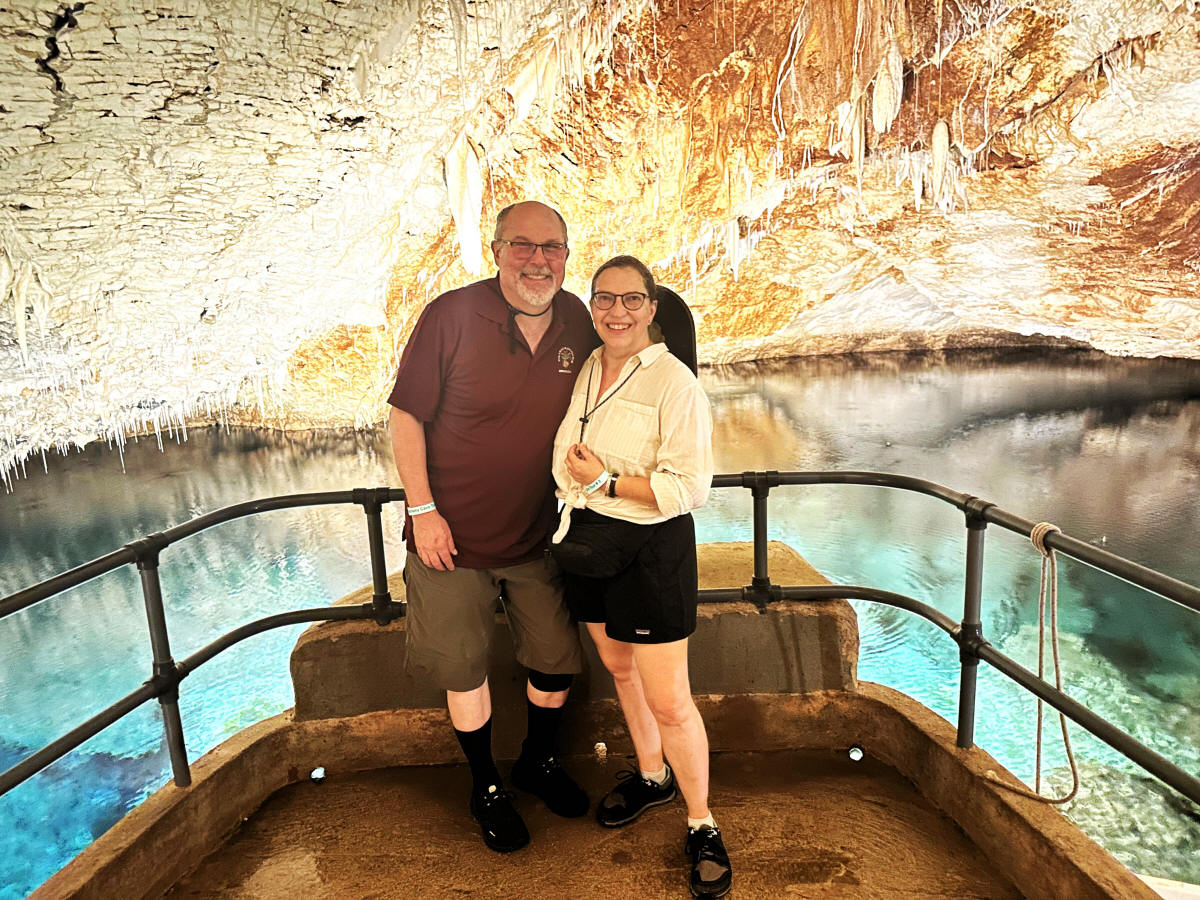
The Crystal Caves were much like the Fantasy Caves, but had a
floating walkway that could rise with the tides (although at high tide
you would be ducking most of the way). It also sported a spot
where someone had lost a hat and a cell phone (picture below with the
guide lighting it up with his flashlight).
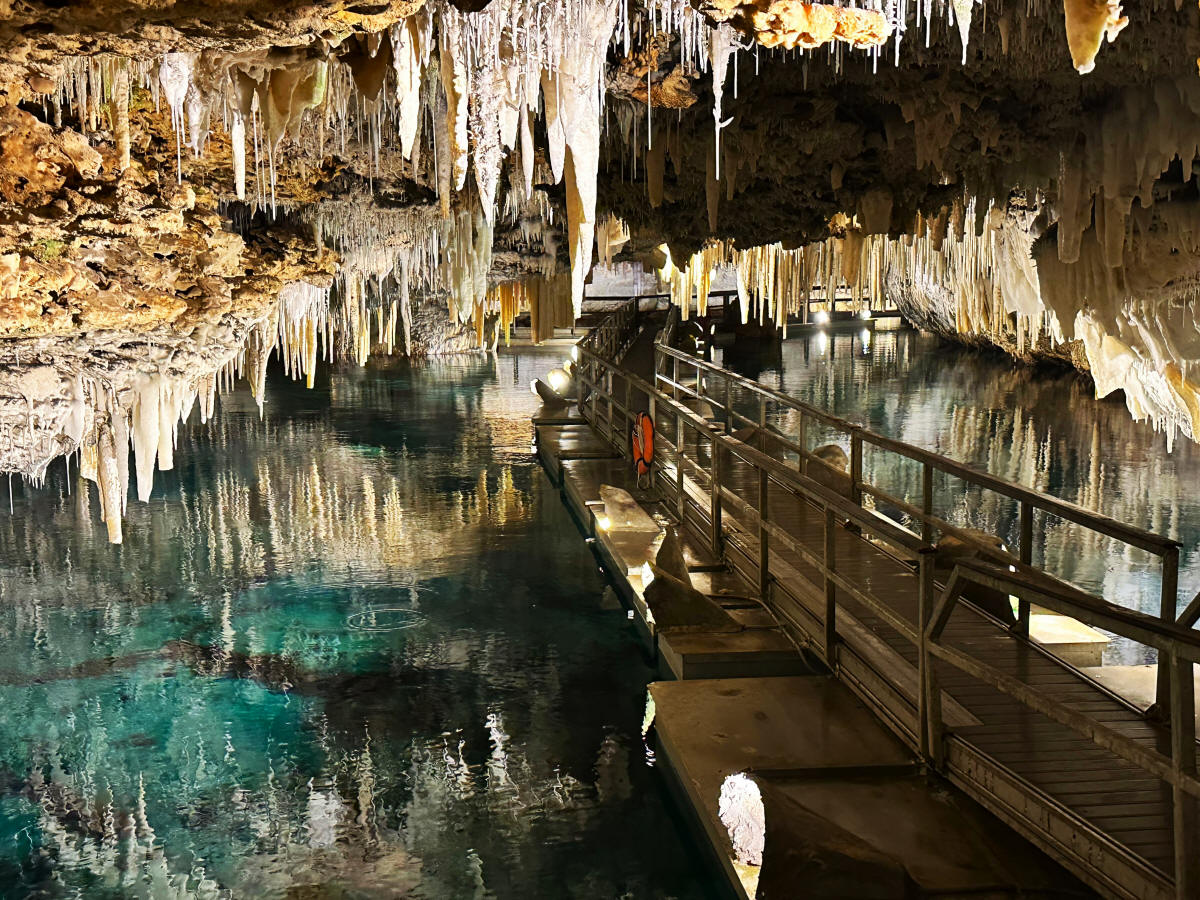
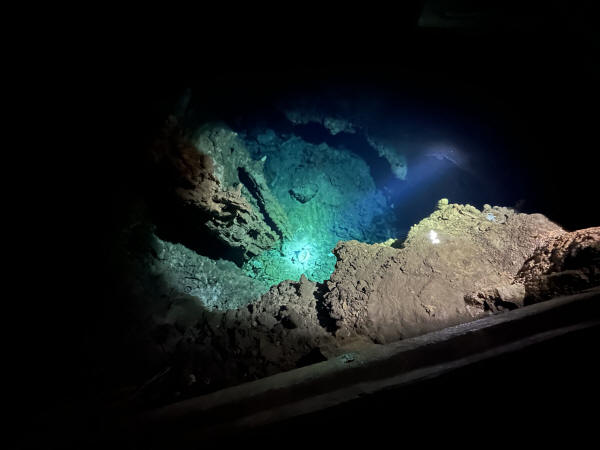 |
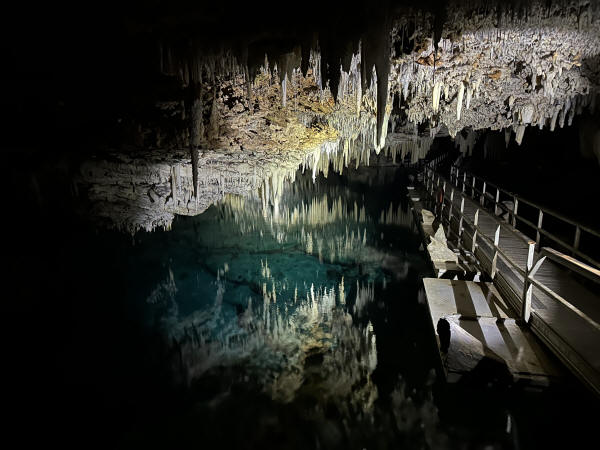 |
We returned and had dinner at the Reefs resort, which was just
down the street (and where we had dinner every night other than the
first night at the lighthouse). They welcomed the business as the
place was almost empty.
 |
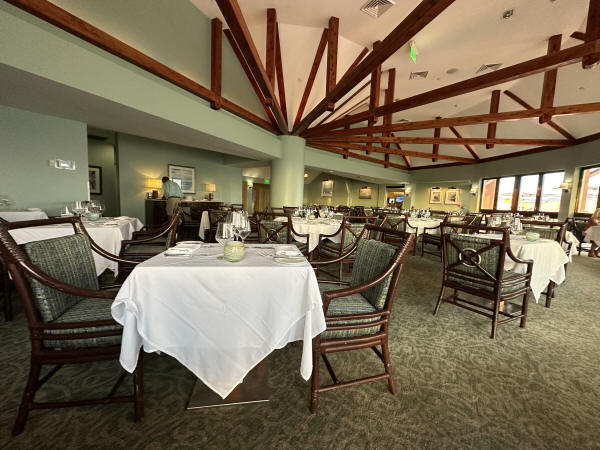 |
Day 4
Day 4 started with a beach search. My family
went to Bermuda when I was around five, and my father took pictures of the
beach. Sixty years later, we were searching for them along the many
coves on the south side of the island with it's famous "pink" sand. It
was again stunning how empty the place was, and we hiked a good portion
of the southern coast without seeing another soul.
The coves had sandy trails leading
between the black basalt cliffs, with their own set of interesting
vegetation and sites to see.
We failed to find the exact spot
from sixty years in the past, but that just gives us a convenient excuse
for visiting Bermuda again.
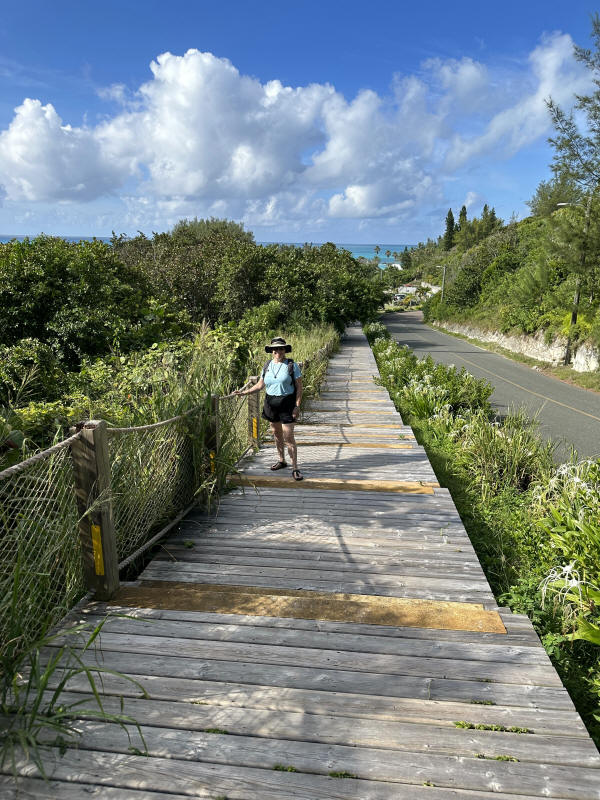 |
 |
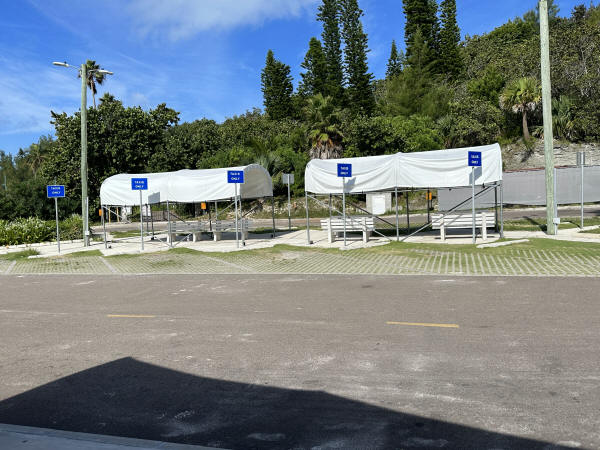 |
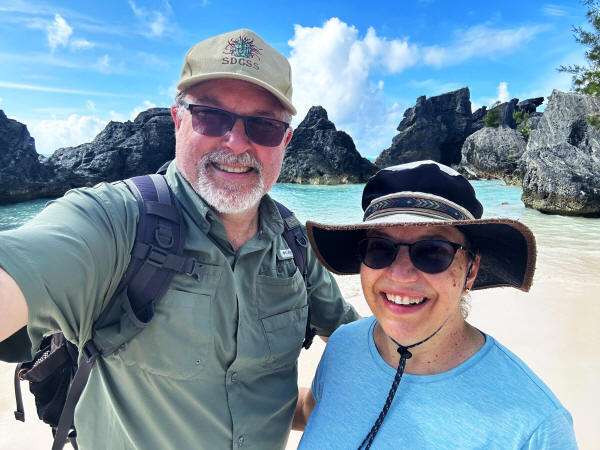 |

 |
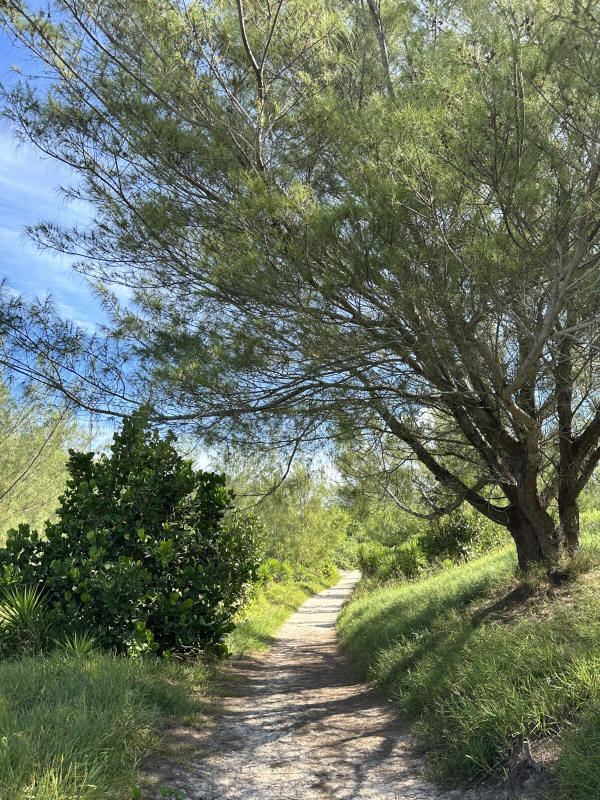 |
 |
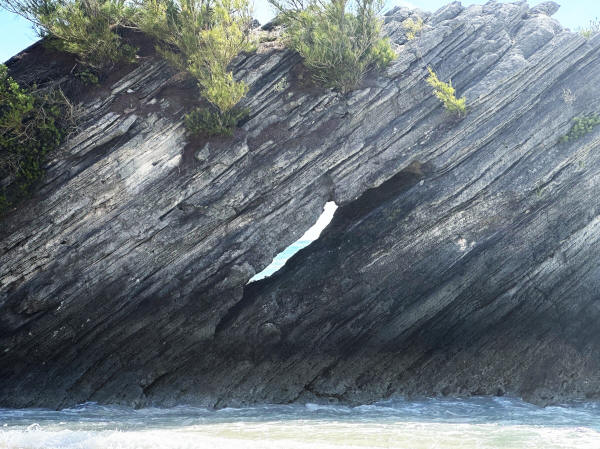 |
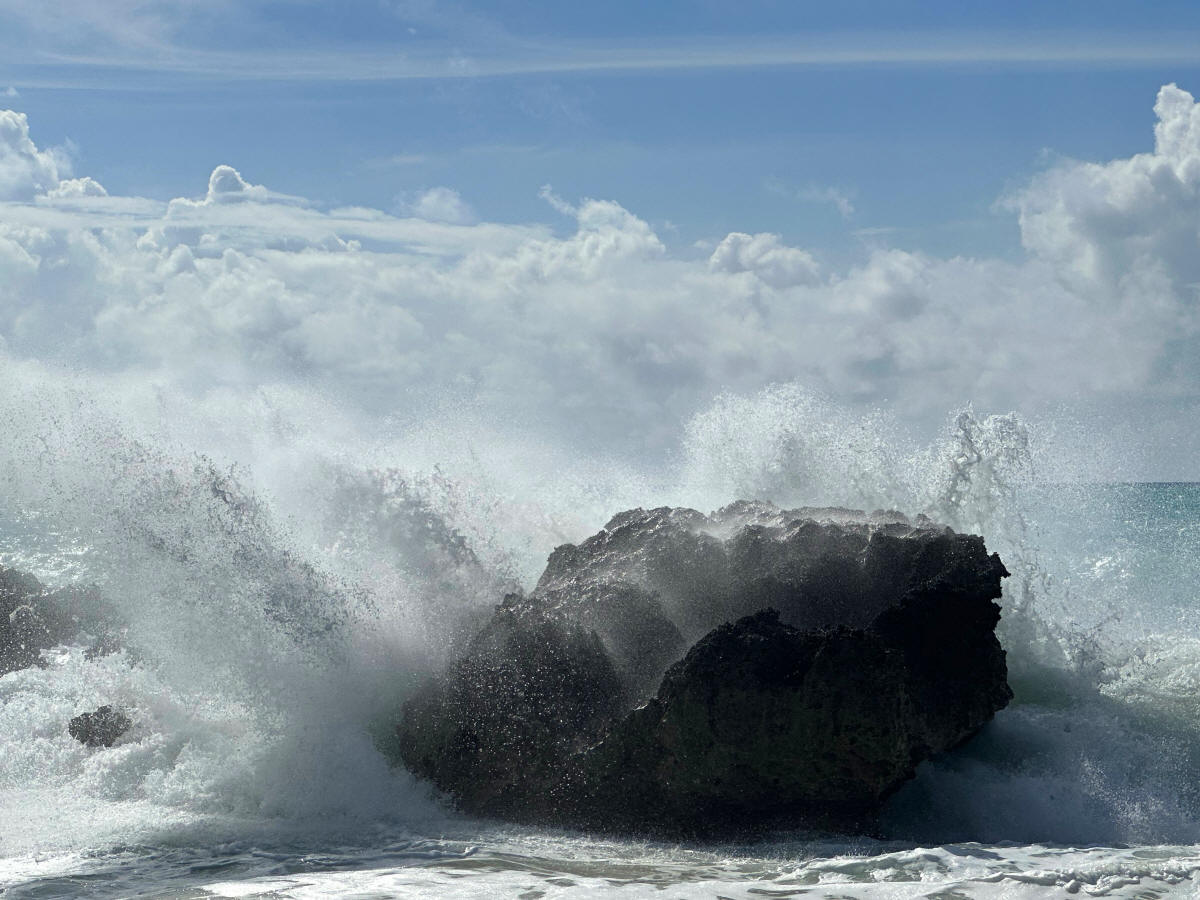
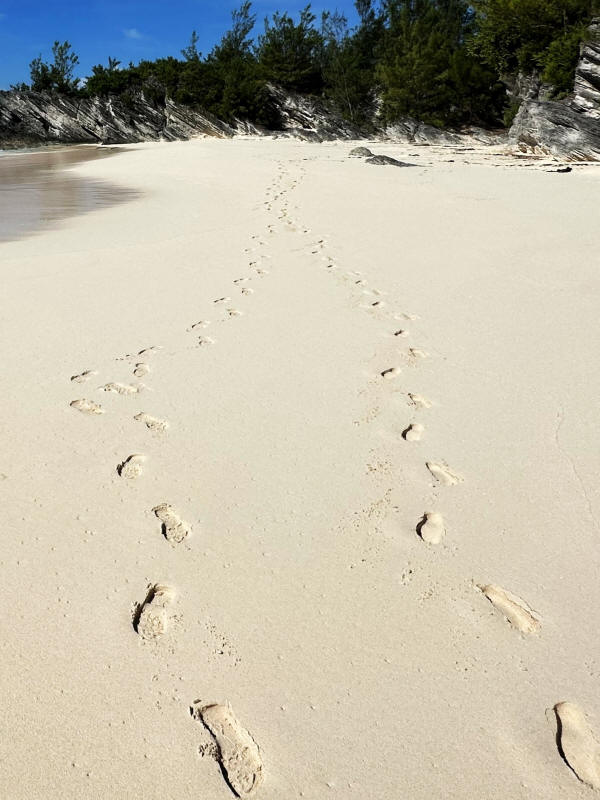 |
|
||||
 |
 |
In the afternoon, we headed into the largest city in Bermuda,
Hamilton. Really, it was mostly to visit the bookstore (Alison
loves bookstores), but we decided to return to the Royal Port (which I
like to think of as "Port Royale" after the card game) to buy mementos
... a couple of paintings and some hand made pottery, including a very
cool sake set, because nothing says "Bermuda" like sake). That
meant taking the ferry, which was fun in and of itself, and then
returning on the correct "number 7" bus, which meant we'd done a giant
loop around half the island. But there was enough time before the
ferry left that we could hike to Fort Hamilton, which was on the top of
a hill, which given the heat and humidity was a bit of a rough hike, but
totally worth it.
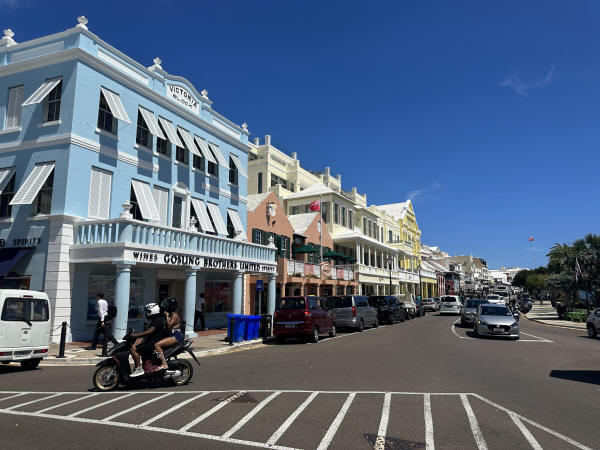 |
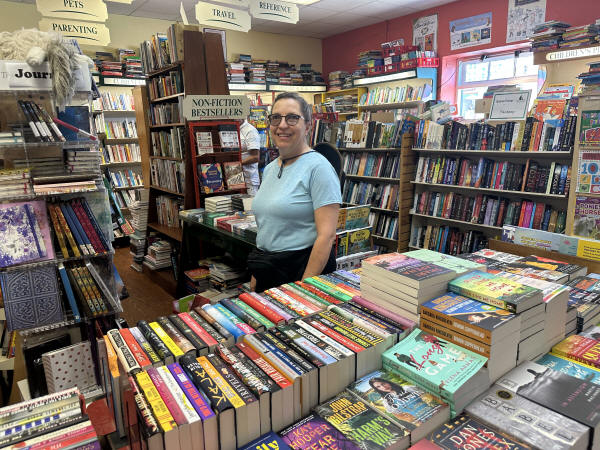 |
 |
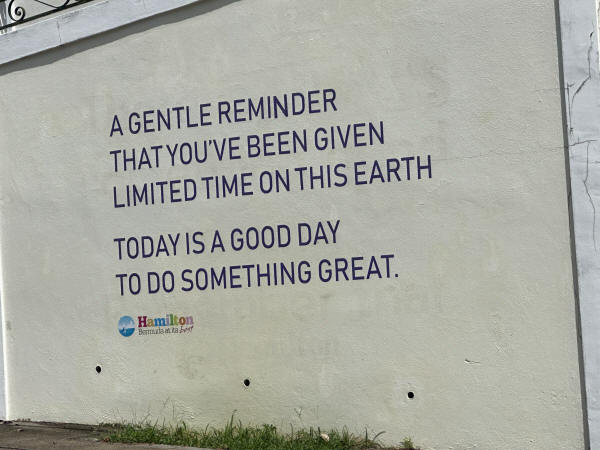 |
Fort Hamilton wasn't the museum that the other fort (or "Keep")
was, but it was fun to wander through the ancient walls and underground
labyrinth (it was a bit creepy). I felt like I could easily spend
a day there hiding in alcoves and jumping out at people wandering by.
But it, like the rest of the island, was devoid of tourists so we had to
settle for a few pictures instead.
One kind of cool thing was the
"moat" which wasn't a moat, or at least, there was no indication it was
every full of water. Just a no man's land between two walls that I
like to think they filled with tigers instead of alligators.
 |
 |
 |
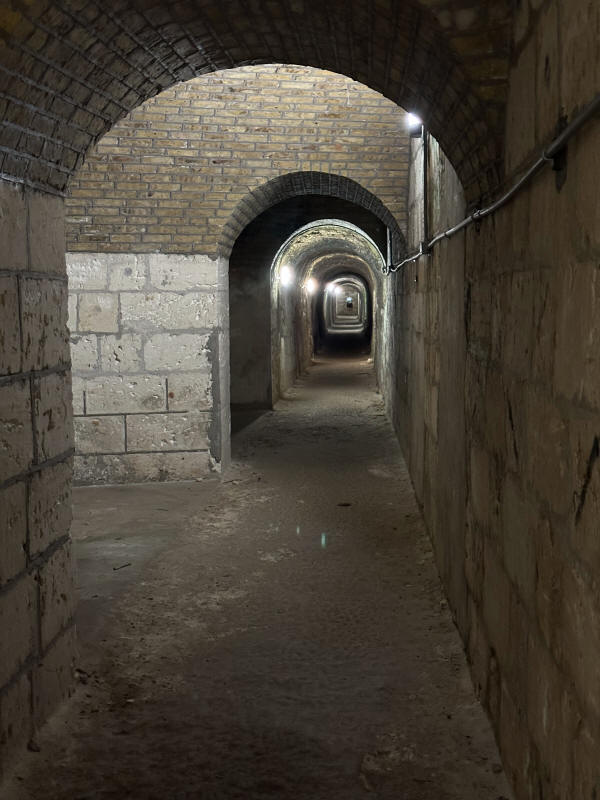 |
 |
 |

Day 5
Day 5 was Saint George, the first permanent
settlement on the island. Except because of the bus system, which
splits the island into two halves that meet at Hamilton, we needed to
return to Hamilton, which gave us the opportunity to visit the
Bermuda National Gallery,
which is oddly named because... well, we've been there. So we spend a
bit of time there, and it indeed had some modern art to mock, which I
always appreciate.
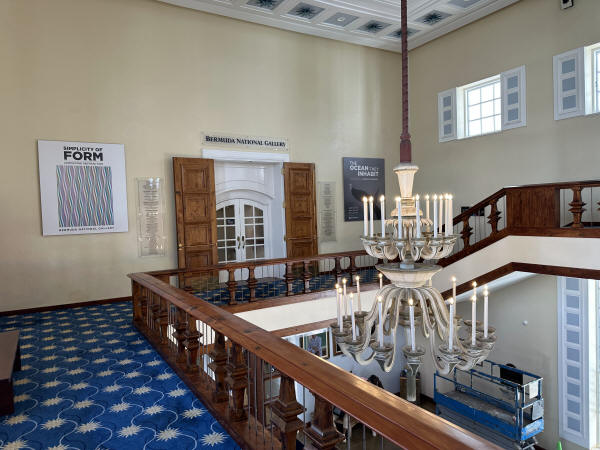 |
 |
Saint George started with lunch where we saw colorful fish and ducks, both of which we fed French fries, and no people, which we'd come to expect. It was quaint, and generally well maintained, although there were a few run down buildings.
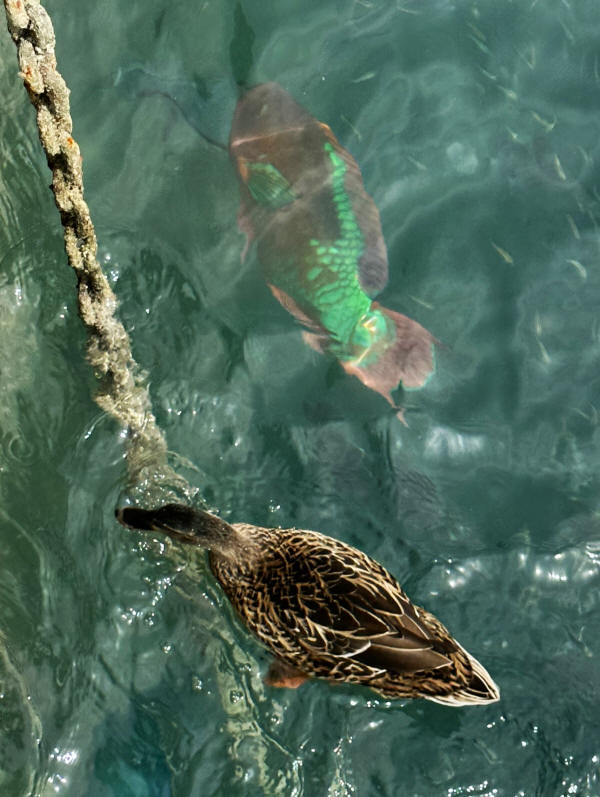 |
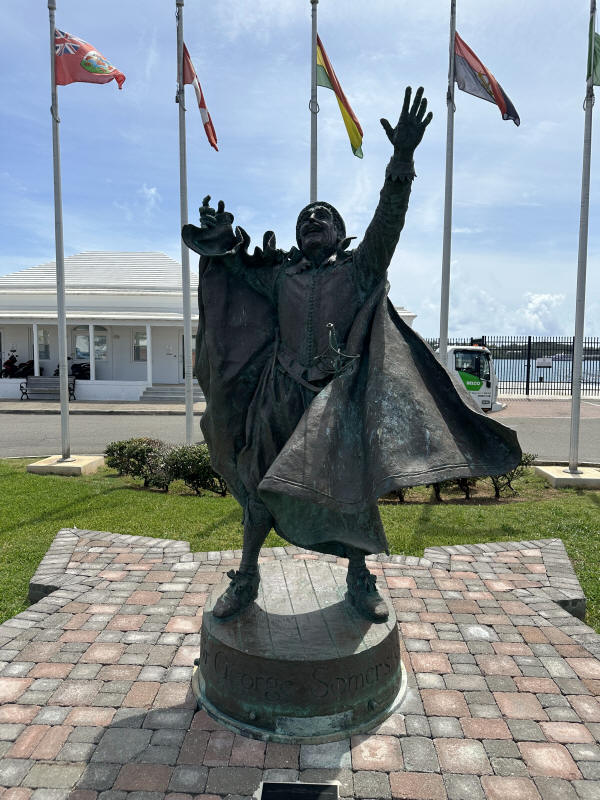 |
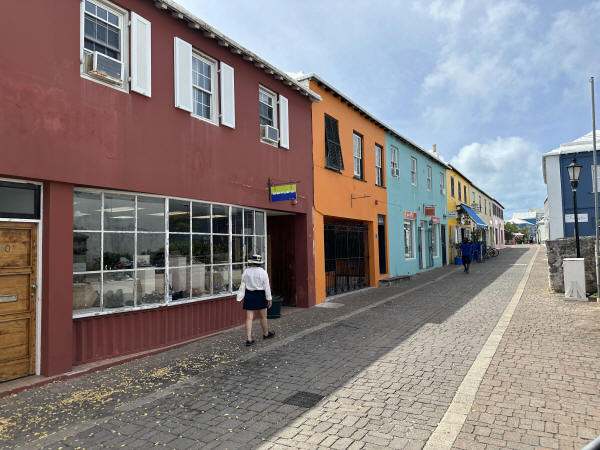 |
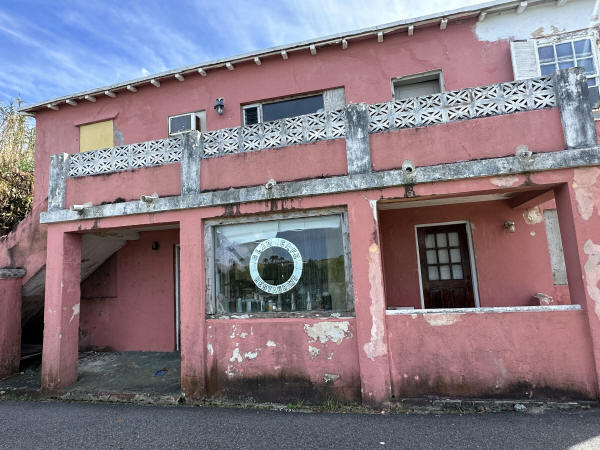 |
Saint Peter's church is probably the most famous church in Bermuda
(although I would personally say the unfinished Cathedral is more
interesting). Unassuming, but unquestionably a church, it was
constructed in 1612 (and then reconstructed a few times over the next
eight years) and is the oldest Anglican church outside of England.
It's construction of rough hewn timbers exposed for all to see is made
of Bermuda Cedar, which was once a common enough building material, but
became scarce after a blight wiped out many of the trees.
There are a few artifacts scattered around, a proclamation that it was
designated "Their Majesties Chappell" by Queen Victoria in 2012, and a
large number of commemorative plaques on virtually every available wall,
most of them dating to the 17 or 16 hundreds (I think I'm going to steal
the phrase "eminent virtues" for my own tombstone).
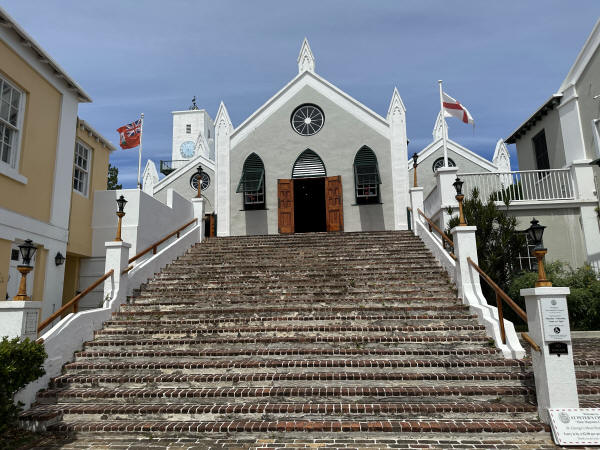 |
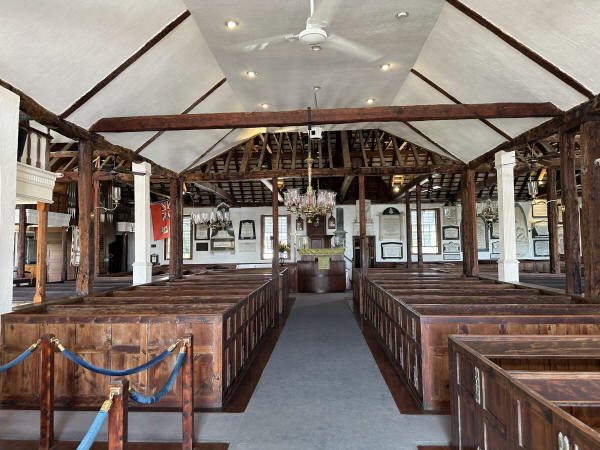 |
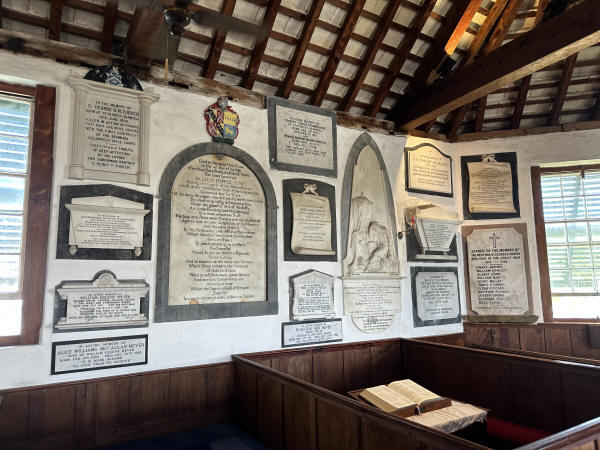 |
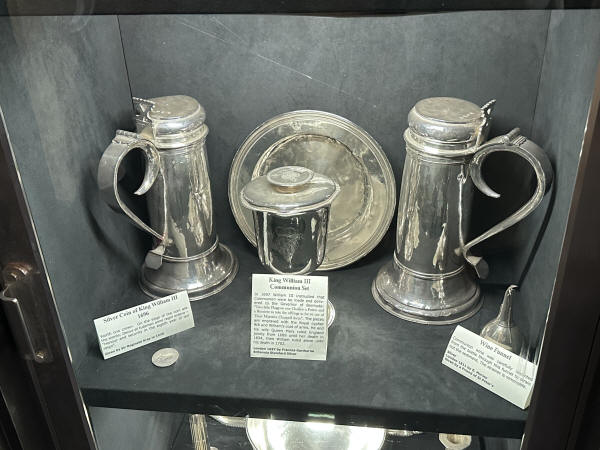 |
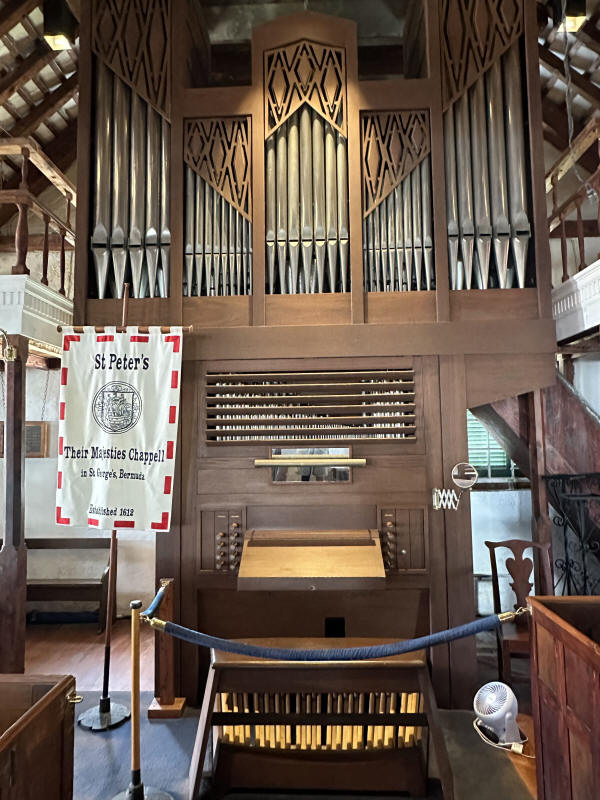 |
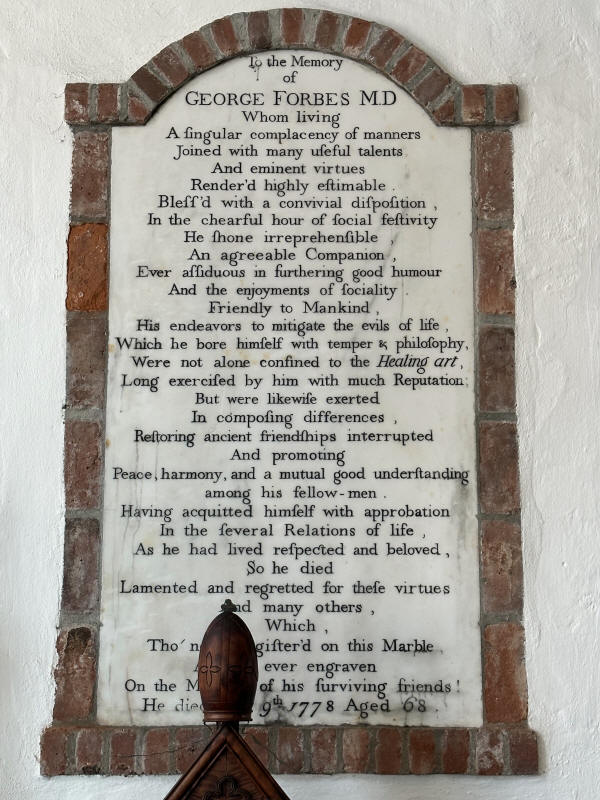 |
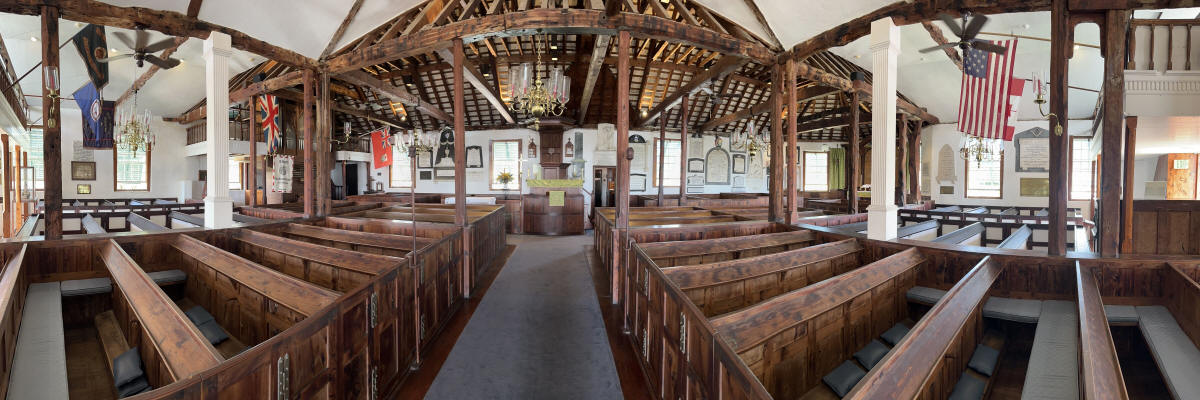
To Alison's delight, outside the church is an extensive
graveyard, and to Dave's delight, a small group of Kiskadees, yellow
bellied birds native to Bermuda, were hanging out on the gravestones.
From many of the gravestones, it was clear that yellow fever was the scourge of Bermuda, taking the
lives of entire families in some cases.
 |
 |
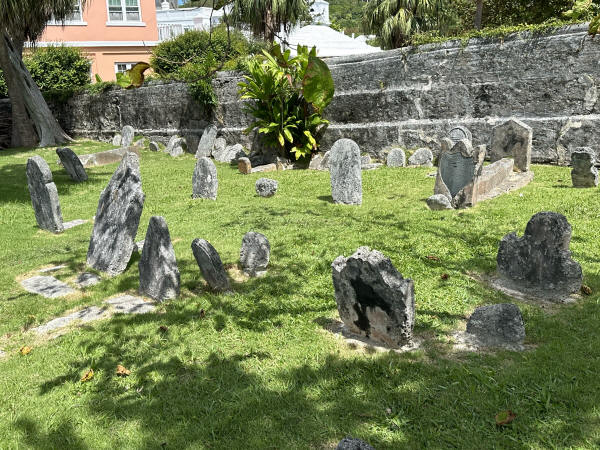 |
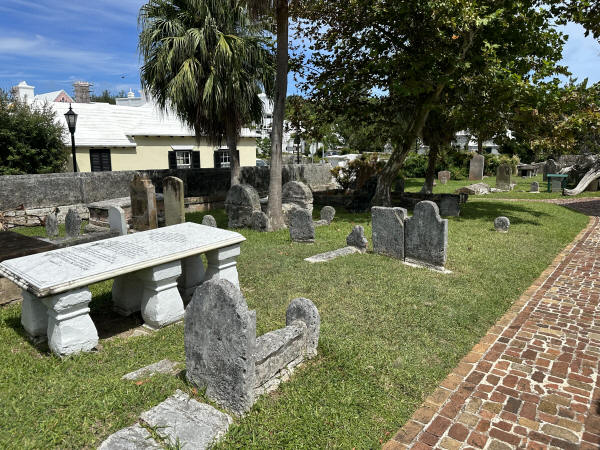 |
Next stop was the unfinished cathedral, which was exactly that...
 |
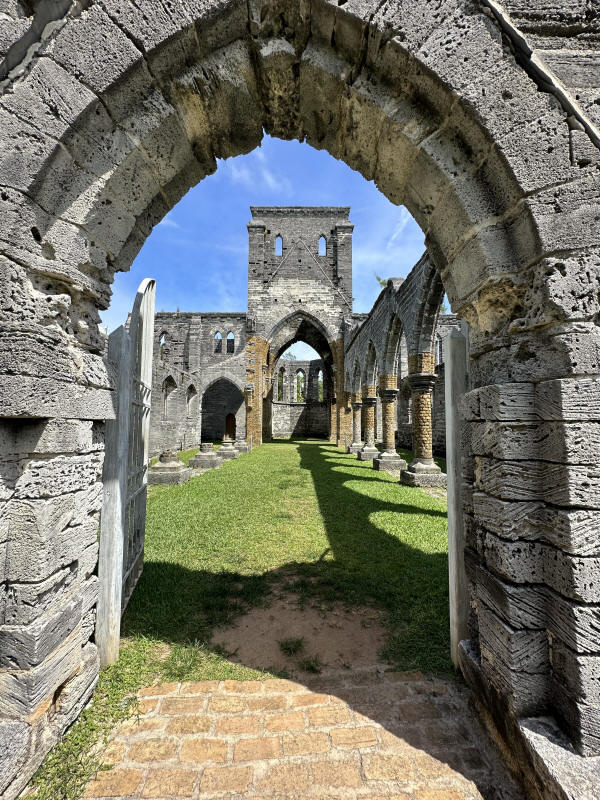 |
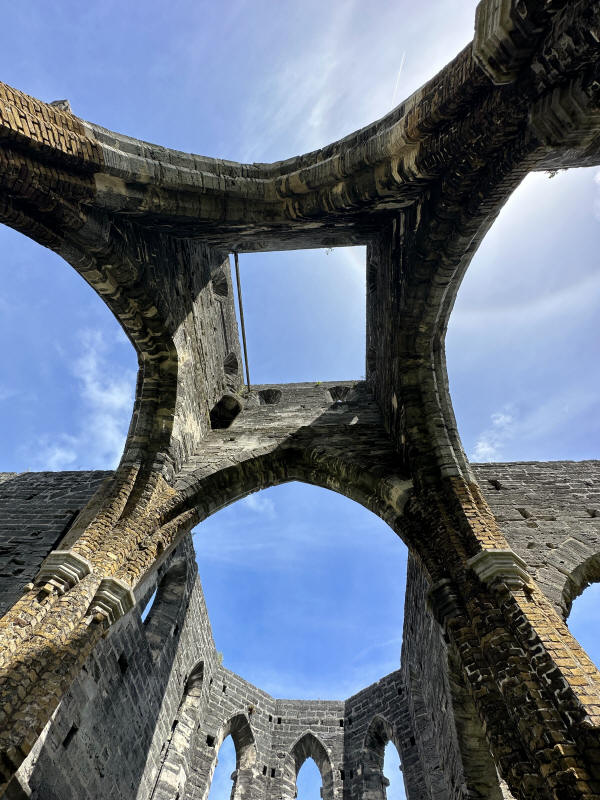 |
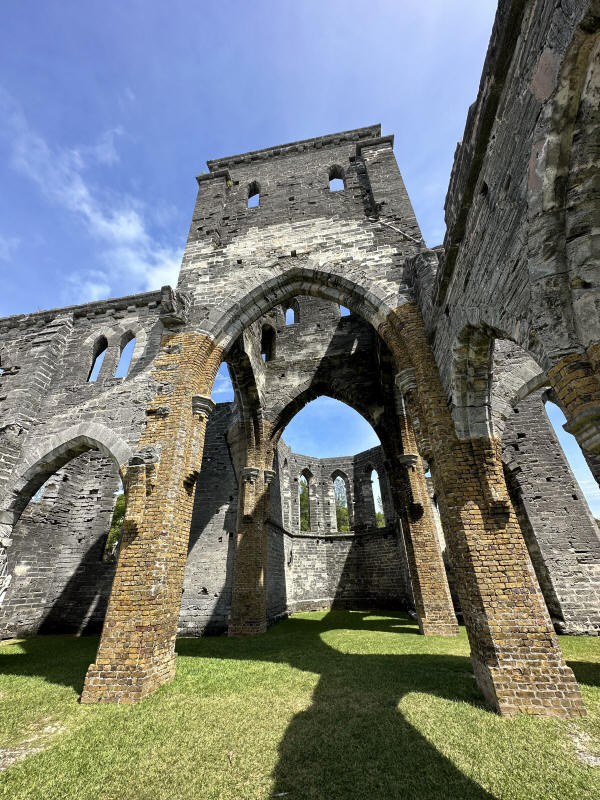 |
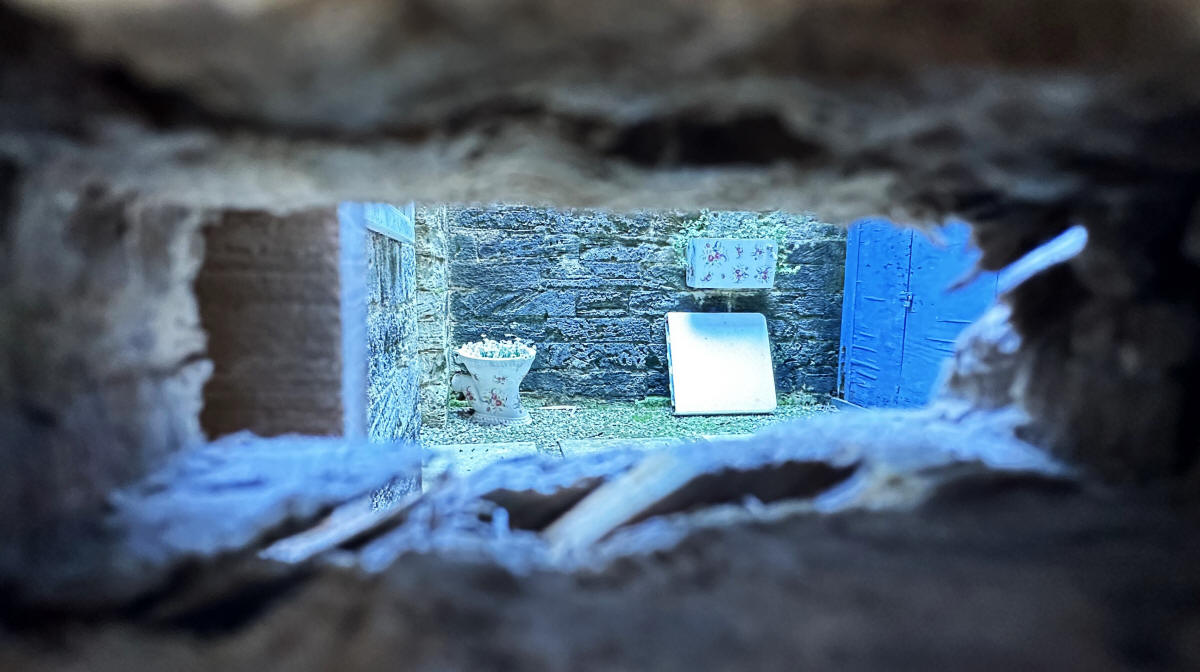
From there we hiked to Fort Catherine, another extensive fortress
with displays and placards describing life as a British soldier during
those times, like the artillery garrison of ninety five soldiers that
was assigned there in 1794 and then apparently forgotten for 13 years,
leaving seven men alive to return home to England in 1807. Along
the way, we passed empty golf courses and Tobacco Bay, which was
supposed to be the best snorkeling on the island but was the site of a
beach club playing rap and serving drinks
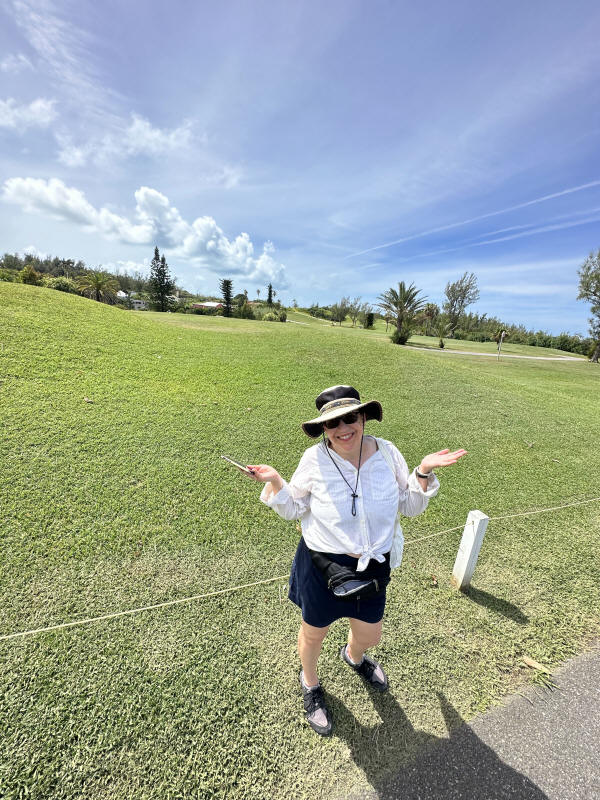 |
|
The fort was interesting, and had weapons from World War 2, reminding us that Bermuda was important as a staging area during that conflict.
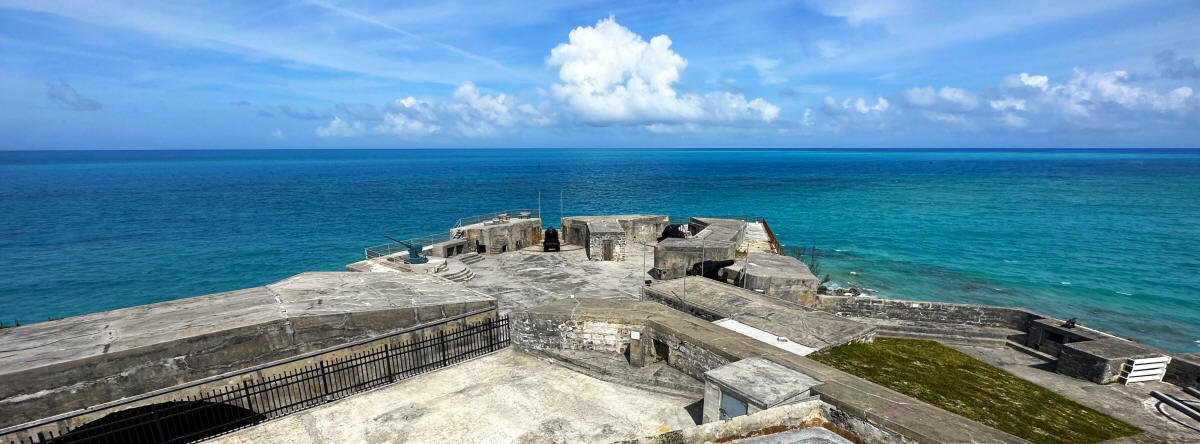
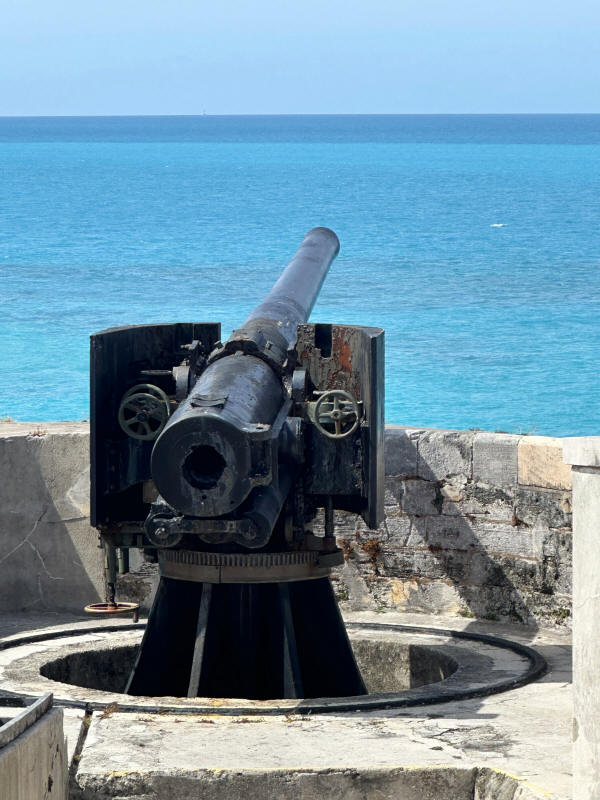 |
 |
|
|
 |
We returned for a glorious sunset and our last dinner in Bermuda
before flying out the last day the airport was open, with Hurricane Lee
fast approaching the island.
